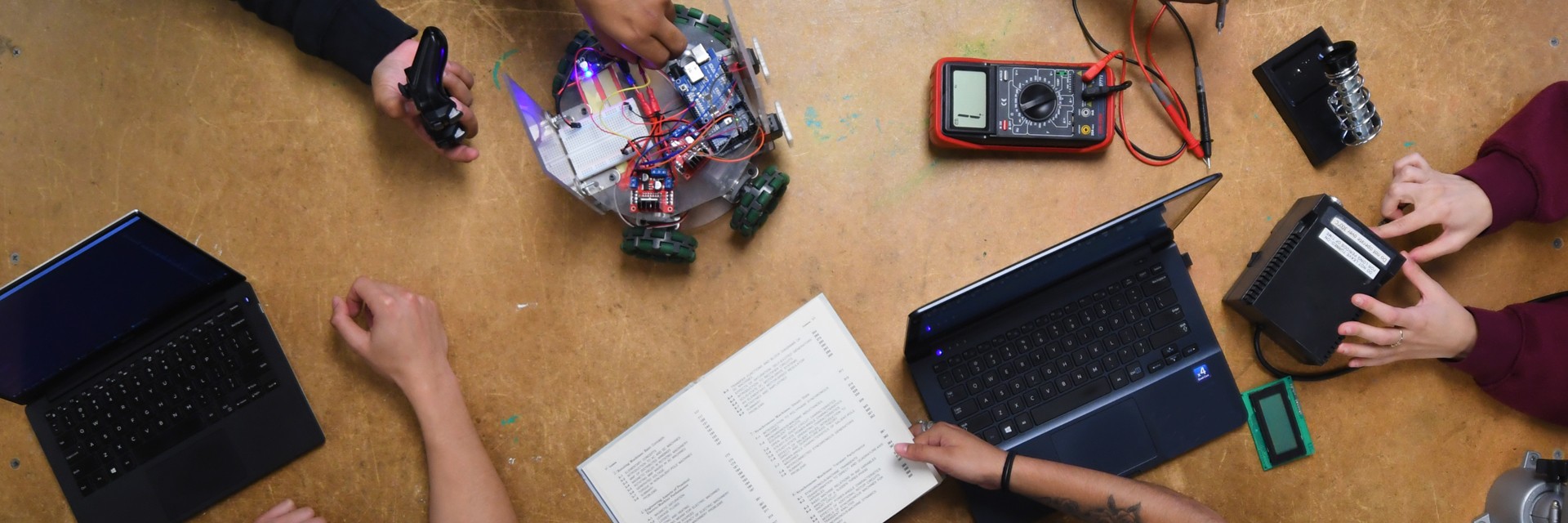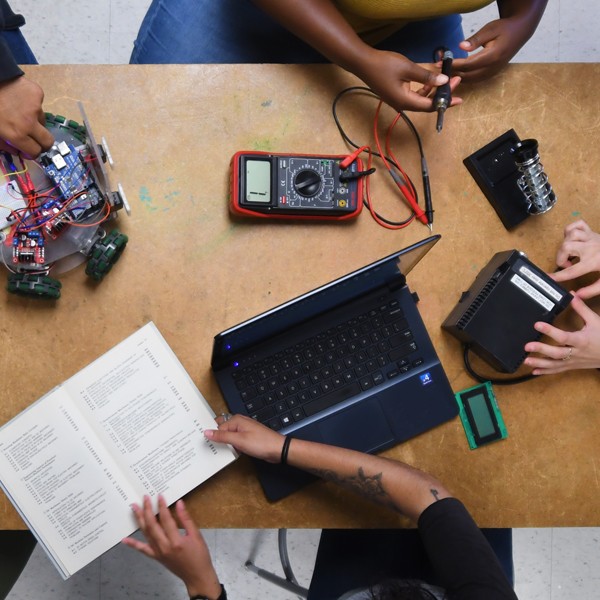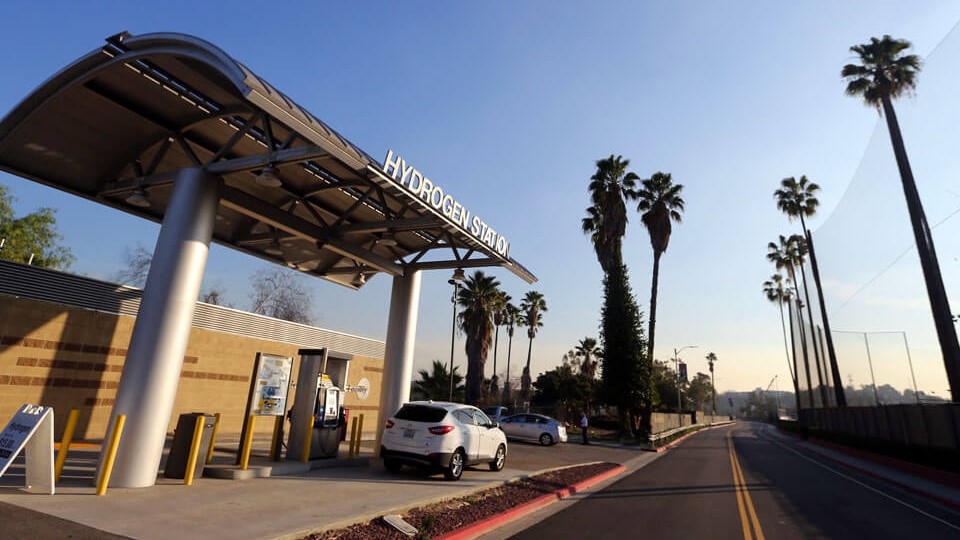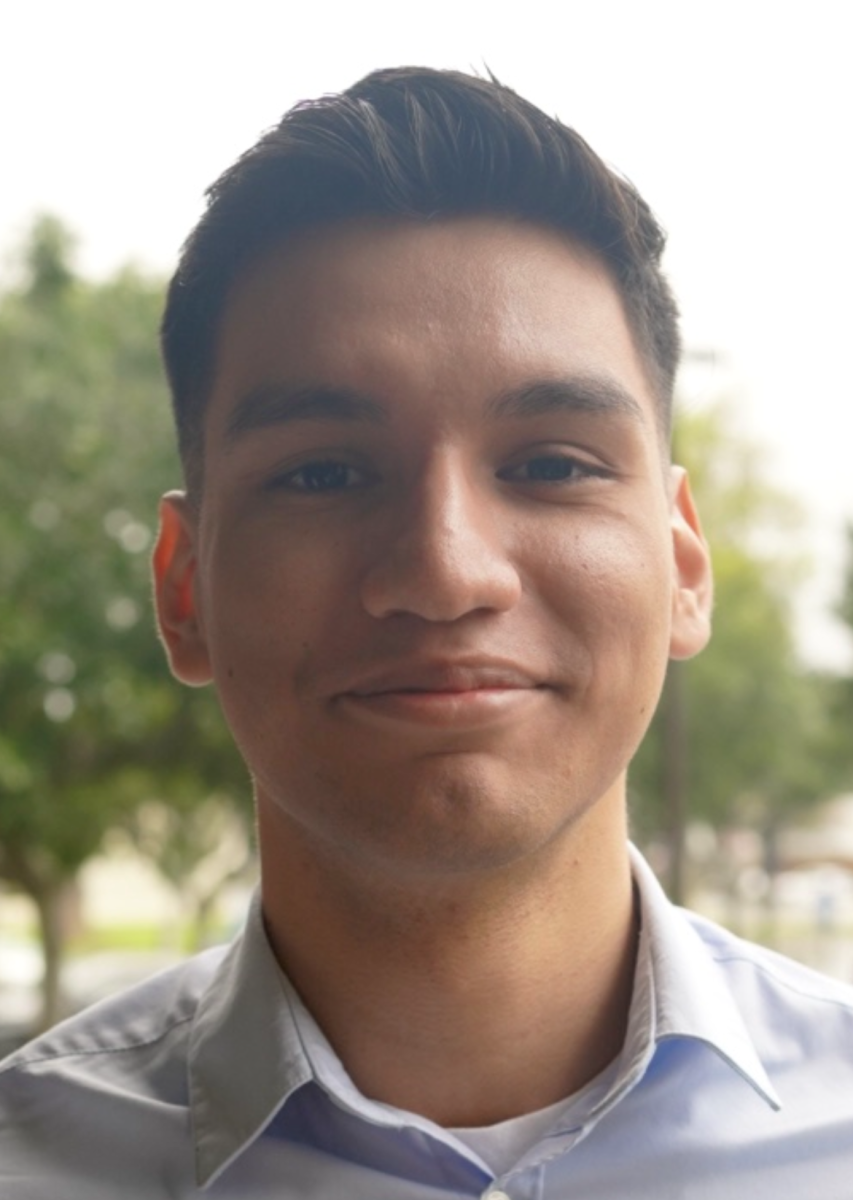The Hydrogen Wave is Swelling
In celebration of Earth Month, we highlight a few CSU students who are working to reduce human impact on the Earth through research and conservation.
The Cal State LA Hydrogen Research and Fueling Facility is the largest hydrogen and fuel-cell research facility at any academic campus in the United States.
As California prepares to say goodbye to fossil fuels, what does the future of fuel look like? According to some students at Cal State LA, it's hydrogen.
“Hydrogen technology is still in its infancy, and the infrastructure is rudimentary compared to combustion engines or battery electric vehicles," says fourth-year mechanical engineering major Favian Orozco (photo shows Favian in blue shirt and sunglasses). “I believe that if I were to get into the hydrogen industry right now, there is a very big future for me."
Orozco works as a student operating engineer with the Cal State LA Hydrogen Research and Fueling Facility, the largest hydrogen and fuel-cell research facility at any academic campus in the United States. Students from multiple disciplines work in the station as interns and in the fuel cell course to complete labs and assignments related to the station.
The station is led by technical director David Blekhman, Ph.D., a professor of technology in the College of Engineering, Computer Science and Technology at Cal State LA. Dr. Blekhman was awarded a 2023 Wang Family Excellence Award by the CSU for contributions to his field and for facilitating student research opportunities.
Hydrogen fuel cell electric vehicles are critical to California's goal of getting 1.5 million zero-emission vehicles on the road by 2025. They are also a vital part of the state's work to achieve its climate change goals, improve air quality and reduce reliance on fossil fuels.
At Cal State LA, hydrogen is made using a process called electrolysis, where the water molecule is split into oxygen and hydrogen using electricity. The processed hydrogen is then compressed up to 6,200 psi, or pounds per square inch, and placed in storage tanks. During vehicle fueling, the hydrogen is compressed again, this time up to 10,000 psi.
Gutierrez and Orozco have been trained to operate the systems, perform maintenance and understand when to intervene and perform troubleshooting. They also serve customers, helping fuel the vehicles, answering questions about vehicle issues and educating the public on how hydrogen power works.
“We're also writing modules and curriculums to teach future students what we have learned from Dr. Blekhman with regard to the hydrogen process, safety protocols and more," Gutierrez says.
Both Orozco and Gutierrez attended the Marc and Eva Stern Math and Science School, one of two high schools located on the Cal State LA campus, and were inspired to become involved with the Hydrogen Station by their older brothers who attended the university.
The students say their experience has prepared them for future careers in the alternative fuel industry and environmental science and outreach.
“Hydrogen may not just be used for personal vehicles in the future," Orozco says. “Maybe the technology will be adapted for industrial applications, like freight trucks or forklifts in Amazon warehouses—or maybe even for space travel!"
For Gutierrez, the excitement comes from working with a technology that has the power to reduce carbon emissions and make the air cleaner.
“It provides us with real potential to transition to a more environmentally friendly fuel alternative," he says. “Because I've been part of Hydrogen Station and get to see how it's made firsthand, I can make an impact on the future of sustainability."
To learn more, visit the Cal State LA Hydrogen Research and Fueling Facility website.




